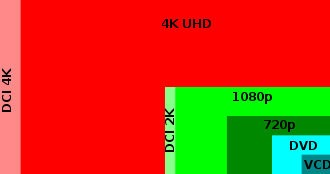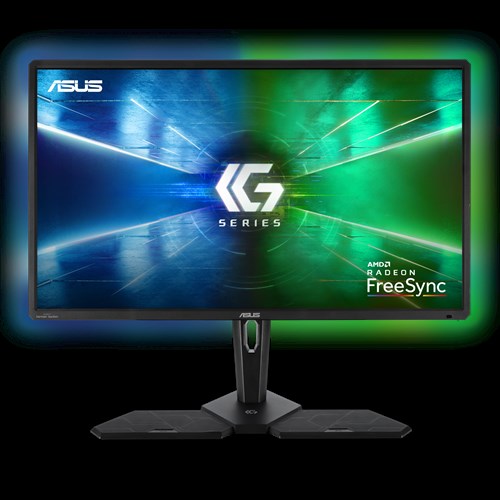4K monitors first hit the mainstream in 2012, but price tags were eye-watering, costing early adopters multiple thousands of pounds to get ahead of the curve.
But even as the years have gone by, with prices coming down to far more reasonable levels, most gamers still don’t use it. In the most recent Steam Hardware Survey, just over two percent of gamers have a 4K monitor.
But is it time we changed that?
Should you buy a 4K monitor for your gaming PC? The answer to that question isn’t easy, as it depends on the types of games you play, your budget, personal tastes, and whether you’ll be working on the system too. It also depends just how powerful your gaming PC is, as even today, 4K is taxing.
What is a 4K monitor?
Before we can decide whether a 4K monitor is right for you, it’s important to clarify what exactly a 4K monitor is.
Technically, a 4K monitor can be any display that has a horizontal resolution that is around the 4,000-pixel mark. The most commonly found 4K pixel ratio in monitors and televisions is typically described as ultra high-definition, or UHD, and has a resolution of 3,840 × 2,160, using the 16:9 aspect ratio.
That’s precisely twice the horizontal and vertical pixels of a 1080p display, making it four times as dense on displays of the same physical size.
This means that 4K monitors give you much more screen real estate.
By increasing the number of pixels on your display, you create more physical space for windows, letting you see more on your screen at once. That can be just as handy for displaying enormous spreadsheets as it can be for seeing more of the map in your favourite RTS game.
If you can simply fit more of your game’s window onto your screen, you can have a competitive advantage. It can enhance productivity too, depending on the kind of work you do. Certainly, if you’re working with higher resolution video for editing purposes, having a 4K monitor is a great help.
You’ll Have To Configure It
But 4K does mean that everything gets a lot smaller.
You’ll need to configure your desktop to show the icons at a larger size and some applications just don’t scale well with ultra-high resolutions.
There are also older games that don’t support such a high resolution, which can mean black bars on your screen to make the game window fit properly, or blurring as you downgrade to below native resolution, or stretch the game across the display to make it fit.

Niche resolutions
There are other 4K resolutions used in more niche areas, such as digital cinema production monitors, professional 4K cameras, digital review monitors, and digital display boards. There are also alternative 4K resolutions used in some ultrawide monitors, and all-in-one displays, like the Apple iMac
But for the most part, 3,840 x 2,160 is the resolution that people mean when they’re referring to 4K, and unless you’re buying a monitor that has a unique shape or configuration, that’s likely to be what you end up with.
What does a 4K monitor do?
The main purpose of a 4K monitor is that it has a much higher resolution than 1080p, typically twice that of its horizontal and vertical pixels, thereby offering four times the number of pixels.
That leads to a sharper image, especially close up, and can help showcase finer details of an image, making for a more realistic picture, whether you’re looking at photos, watching a TV show or movie, or playing a game.
There are diminishing returns on increasing resolution, however. While there is no denying that 4K is prettier to look at than more traditional HD resolutions, like 1080p, the differences between the two aren’t as stark as they were when moving from SD to HD.
You can see extra detail when up close with 4K, but what it does allow you to do is enjoy crisp visuals on larger displays.
That’s where you’ll tend to see the most benefit with that resolution too. 4K on a 15-inch laptop display is largely wasted, but once you go beyond 27-inches, 1080p can look a little strained, which is where higher resolutions like 1440p, and in this case 4K, really come into their own.
What do you need to watch movies on a 4K monitor?
Another consideration to make when buying a 4K monitor, is whether your PC is powerful enough to run it.
If you just want to run Windows applications or watch 4K movies, you don’t need anything too hefty. If your GPU is from at least the last five years, and you have a reasonable mid-tier processor and memory, you should have no difficulty with using a 4K monitor.
However, you will need to make sure that your 4K monitor is connected to your PC over a cable and connector that supports 4K resolution.
DVI-D and VGA are no good, as they just don’t have the bandwidth for such a connection.
HDMI isn’t a bad choice, but the oldest you could use is HDMI 1.3 or 1.4, which support 4K at 30Hz at most, but this is a less than ideal viewing experience.
HDMI 2.0, however, can handle 4K at 60Hz without difficulty which provides a much more fluid image. You’ll need HDMI 2.1 for anything beyond that, though.
DisplayPort is arguably the best connector standard to use for 4K, with even older DisplayPort 1.2 connections being able to handle 4K at up to 75Hz. DisplayPort 1.4 can go all the way up to 120Hz at 4K resolution, with newer standards going far beyond that if required – though they are particularly rare.
USB-C is also an option, especially if you’re outputting from a laptop, though it needs to be one of the higher speed versions of that connection to best take advantage of 4K.
What do you need for gaming on a 4K monitor?
4K isn’t too taxing on a PC if all you’re doing is watching movies and web browsing, but if you want to game at 4K, that’s a whole other story.
4K is an extremely taxing resolution to play games at, even in older AAA games and while you may be able to get reasonable frame rates with mid-tier graphics cards, the best graphics cards for 4K gaming are at the top end of the pile.
AMD, arguably, doesn’t have a GPU designed with 4K in mind at this time, with its current flagship, the 5700 XT, more targeted towards 1440p gaming.
For true 4K power, you want to look at cards like the Nvidia RTX 2070 Super and up; that includes the original 2080, the 2080 Super, the 2080 Ti, and the newest range of 30 series graphics cards.
A Powerful CPU Will Help
This is all somewhat dependent on the types of games you want to play and the frame rates and detail levels you expect to run those games at – indie games are easily playable at 4K on much weaker hardware.
But if you want to play the latest AAA games with everything maxed out at 4K resolution and expect anything but a slideshow, you’re going to want a powerful graphics card. Our guide to the most powerful GPU and CPUs can help lead you in the right direction.
A powerful CPU can help too, especially when it comes to raising frame rates beyond 60 FPS, but it’s less important than a powerful GPU when it comes to 4K gaming.

What should you look for in a 4K monitor?
4K monitors are more affordable today than ever, but that doesn’t mean you should go for a budget choice.
If you only want to use the 4K monitor for browsing the web and answering emails in as crisp a picture as possible, than a 4K monitor that fits your budget is the most important consideration. Don’t fret too much about the details.
If you want to watch movies, an IPS panel is a good one to look out for, as it improves colors and viewing angles. HDR support is good too, if you don’t mind spending quite a lot more for the privilege.
If you’re a gamer, then there are a few other features worth paying a little more for.
Adaptive sync technologies, like AMD’s FreeSync and Nvidia’s G-Sync will make sure that your gaming experience is smooth and tear-free. If you expect to be able to render your games at above 60 FPS too, a high refresh rate 4K monitor (at speeds like 120Hz, 144Hz, or even 240Hz) is a good one to opt for, although that combination of technologies tends to get inordinately expensive.
The sweet spot for many gamers is a 1440p (2,560 x 1,440 pixels) monitor with a high refresh rate. They’re often comparably expensive to decent 4K screens, but still give you a resolution bump over 1080p that is a noticeable improvement, and they also give you a smoother gaming experience to boot.

It depends on you
So, should you buy a 4K monitor for your gaming PC?
It really depends on what you want to use it for. If you’re going to be playing single-player games with expansive vistas or doing high-end video work and you have a powerful graphics card to run it all, then go right ahead.
But if you’re not, or you don’t, and you want to get what many consider to be the best gaming experience you can buy at a reasonable cost, a 1440p display with a high refresh rate might be a better bet.
If you need any more help making your decision, please give our Chillblast PC experts a call. They’ll be happy to walk you through what it is you need to take the best advantage of a 4K monitor, or whether building a system designed for something else might be best for you. We’re just a phone call away.
More resources:
If you are interested in a system for photo editing, check out this article that compares the age-old rivals: PC vs Mac!
Check out this article if you have an old CPU (like the Intel 4670K) but aren’t sure whether to upgrade it for 1440p gaming!






